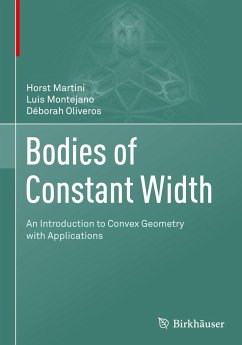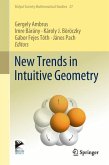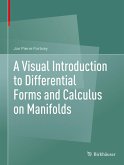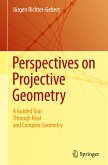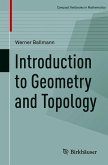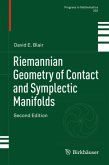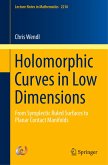This is the first comprehensive monograph to thoroughly investigate constant width bodies, which is a classic area of interest within convex geometry. It examines bodies of constant width from several points of view, and, in doing so, shows surprising connections between various areas of mathematics. Concise explanations and detailed proofs demonstrate the many interesting properties and applications of these bodies. Numerous instructive diagrams are provided throughout to illustrate these concepts.
An introduction to convexity theory is first provided, and the basic properties of constant width bodies are then presented. The book then delves into a number of related topics, which include
Constant width bodies in convexity (sections and projections, complete and reduced sets, mixed volumes, and further partial fields)
Sets of constant width in non-Euclidean geometries (in real Banach spaces, and in hyperbolic, spherical, and further non-Euclidean spaces)
The concept of constant width in analysis (using Fourier series, spherical integration, and other related methods)
Sets of constant width in differential geometry (using systems of lines and discussing notions like curvature, evolutes, etc.)
Bodies of constant width in topology (hyperspaces, transnormal manifolds, fiber bundles, and related topics)
The notion of constant width in discrete geometry (referring to geometric inequalities, packings and coverings, etc.)
Technical applications, such as film projectors, the square-hole drill, and rotary engines
Bodies of Constant Width: An Introduction to Convex Geometry with Applications will be a valuable resource for graduate and advanced undergraduate students studying convex geometry and related fields. Additionally, it will appeal to any mathematicians with a general interest in geometry.
An introduction to convexity theory is first provided, and the basic properties of constant width bodies are then presented. The book then delves into a number of related topics, which include
Constant width bodies in convexity (sections and projections, complete and reduced sets, mixed volumes, and further partial fields)
Sets of constant width in non-Euclidean geometries (in real Banach spaces, and in hyperbolic, spherical, and further non-Euclidean spaces)
The concept of constant width in analysis (using Fourier series, spherical integration, and other related methods)
Sets of constant width in differential geometry (using systems of lines and discussing notions like curvature, evolutes, etc.)
Bodies of constant width in topology (hyperspaces, transnormal manifolds, fiber bundles, and related topics)
The notion of constant width in discrete geometry (referring to geometric inequalities, packings and coverings, etc.)
Technical applications, such as film projectors, the square-hole drill, and rotary engines
Bodies of Constant Width: An Introduction to Convex Geometry with Applications will be a valuable resource for graduate and advanced undergraduate students studying convex geometry and related fields. Additionally, it will appeal to any mathematicians with a general interest in geometry.
"The book ... provides an excellent treatment of the theory of bodies of constant width and gives an encyclopedic account of the topic from multiple perspectives. It can be viewed as a reference source for mathematicians working in this field ... . The whole book is written in a clear and attractive way. Besides the main text, additional notes and impressive collections of exercises at the end of each chapter direct the reader to additional venues and references ... ." (Valery P. Soltan, zbMATH 1468.52001, 2021)

